Contributed Commentary by Kyle D’Silva, Thermo Fisher Scientific
August 14, 2025 | Society has increasingly relied on lithium-ion (Li-ion) batteries since the first commercial battery was introduced in the early 1990s and, today, batteries power critical applications across industries from automotive to medical technologies. Over the years, battery technology has continued to evolve as scientists from both industry and academia work toward building batteries that are safer, more energy dense, and more sustainable to produce.
Between the increased use of Li-ion batteries, new regulatory requirements in global markets and the need to responsibly use critical minerals like lithium and cobalt, battery recycling is emerging as an essential consideration around sustainability. In fact, a recent market analysis by IDTechEx has predicted that the global Li-ion market is expected to see significant growth and reach a valuation of $52 billion by 2045. As we collectively look to battery technology to aid in the clean energy transition, there’s a critical need to invest in building a robust battery recycling workflow. By incorporating innovative analytical technologies into managing the end of life of these batteries, the industry can also progress toward building a closed-loop infrastructure that aids in sustainable operations and helps to alleviate supply chain vulnerabilities.
Optimizing the lithium-ion battery recycling workflow
The recycling of Li-ion batteries is complex. While several analytical techniques are used to create efficiencies across the Li-ion battery value chain, there are a few key technologies, such as handheld X-ray fluorescence (XRF) and process Raman spectroscopy, that can help overcome challenges associated with battery recycling. Offline laboratory analysis is a major bottleneck in battery recycling process, as it’s time consuming and often costly. Battery recyclers need technologies that enable fast measurements and reliable results for real-time decision making during the recycling process. Process Raman and handheld XRF address these needs effectively.
For example, a common challenge is identifying which active materials can be extracted and reused for battery manufacturing. First, the battery packs must be disassembled and the remaining battery cells further broken down and separated from black mass, which is a powder containing active materials from the cathode and anode. A typical recycling process route involves chemically treating the black mass in a hydrometallurgical process to recover pure salts of lithium, nickel, cobalt and/or manganese. Raman spectroscopy can be utilized for in-line monitoring of the solvent removal process as well as the active material concentrations.
Notably, the recovered materials need to be analyzed after each step to verify purity or ensure viability for reuse. Raman spectroscopy can be deployed to acquire real-time, onsite data, eliminating the delays of traditional laboratory analysis and streamlining the recycling process. Likewise, handheld XRF analyzers play a critical role, as they enable onsite point-and-shoot measurements that help battery recyclers quickly determine the valuable metal composition and economic value of black mass. Oftentimes, black mass is inefficiently recycled, or unwanted material enters the recycling process, leading to loss of profits, but handheld XRF analyzers can help battery recyclers select the adequate recycling route and efficiently recover valuable metals while reducing waste and improving yield.
While confidence and fast decision-making during battery breakdown is an essential part of optimizing the battery recycling workflow, inline Raman spectroscopy systems and handheld XRF help improve efficiency throughout the recycling process by enabling real-time monitoring. Armed with up-to-date data, battery recyclers can make any necessary adjustments throughout the recycling process that can lead to higher recovery rates and reduced waste. Improving materials recovery not only optimizes battery recycling, but it also leads to holistically sustainable operations.
Building The Foundation For A Circular Battery Economy
Safely recovering battery materials for reuse can help the industry transition to a circular economy, which further reduces the environmental impact of battery manufacturing and bolsters supply chains. As more battery recyclers incorporate technologies like handheld XRF analyzers and process Raman spectroscopy into the workflow, the process becomes more efficient and sustainable. These technologies, plus complementary analytical tools that enable high sensitivity composition and impurity measurement such as electron microscopy, chromatography, and mass spectrometry, allow for more accurate estimates of the economic value of incoming and outgoing materials, which is a significant benefit to the industry.
Industries that rely on batteries, such as automotive, will also benefit from optimized battery recycling. Many companies are strategically collaborating and investing in technological innovations that will help speed up the creation of a circular battery economy. As we continue to rely on batteries as an essential piece of the global clean energy transition, it’s clear that continued research and development, cross-industry collaboration and advanced analytical technologies are vital for a sustainable future.
Kyle D’Silva, director of clean energy for analytical instruments at equipment supplier Thermo Fisher Scientific, is an analytical chemist with expertise in spectroscopy, chromatography and mass. He is responsible for the strategic and market development of analytical instrument portfolios that serve battery, solar, carbon storage, biofuels and hydrogen end markets. He can be reached at kyle.dsilva@thermofisher.com.







